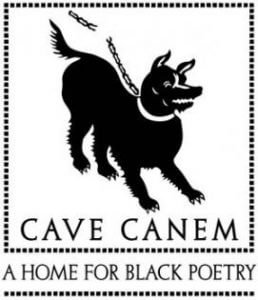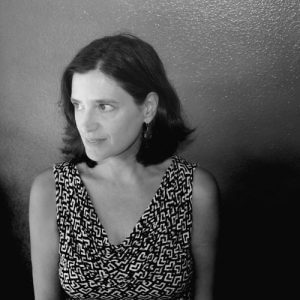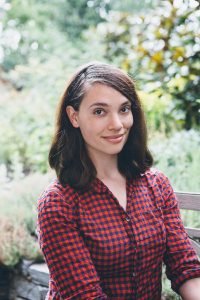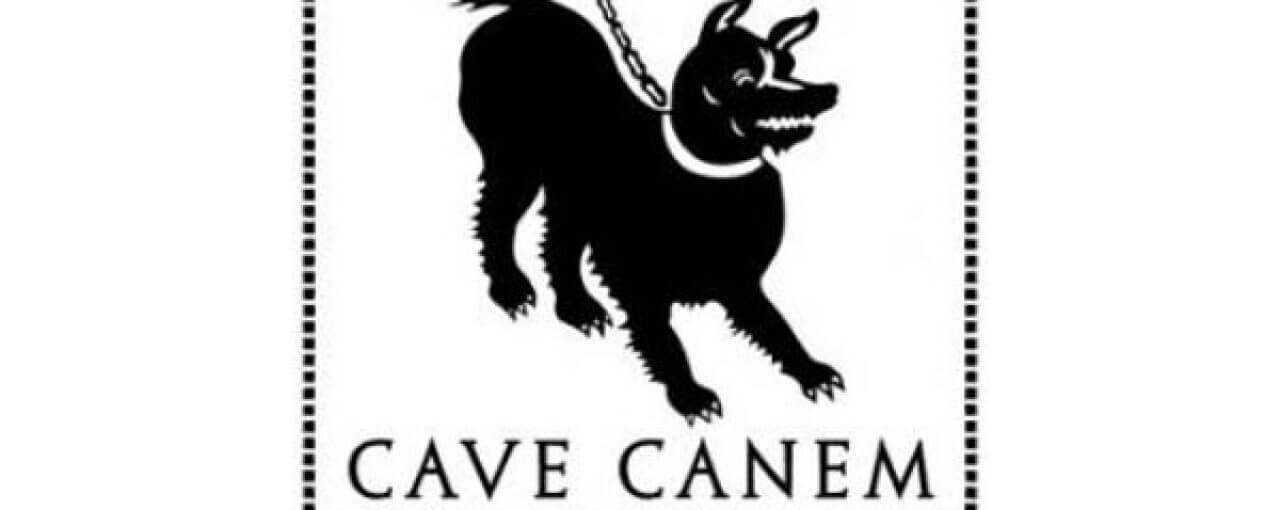August 2018
By DeWitt Henry, Literary Bookmarks Editor
Monthly link highlights to online resources, magazines, and author sites that seem informative and inspiring for working writers. Most are free. Suggestions are welcomed.
Cave Canem: A Home for Black Poetry
As poetry is the WTP focus this summer—in line with our 2018 competitions—I’ll keep to the poetic this month:
For readers and writers following black poetry, Cave Canem (“Beware the Dog”) is an influential online resource, offering 1) new works readings, 2) poets on craft, 3) streaming lectures, 4) a blog (interviews with poets), 5) legacy conversations, and 6) publications.
 Cave Canem Poets was founded by Toi Derricotte and Cornelius Eady in 1996 “to remedy the under-representation and isolation of African American poets in the literary landscape,” and was inspired by the famed Dark Room Collective in Boston (1988–98). Over the years it has become a well-established institution, and operates out of Brooklyn, with Nicole Sealey as the current Executive Director.
Cave Canem Poets was founded by Toi Derricotte and Cornelius Eady in 1996 “to remedy the under-representation and isolation of African American poets in the literary landscape,” and was inspired by the famed Dark Room Collective in Boston (1988–98). Over the years it has become a well-established institution, and operates out of Brooklyn, with Nicole Sealey as the current Executive Director.
In addition to tabs across the top for the different features of the site, the main features are presented as a full-screen slide-show graphic, inviting clicks.
The DOGBYTE blog (as of July 9) offers a poem by Rachel Nelson, an interview with artist and translator Layla Benitez-James, and archived in-depth interviews with Derrick Austin, Yolanda Wisher, Ama Codjoe, and others.
The New Works Reading Series has links to eight pairs of poets hosted at New York City venues, most recently Safia Elhillo, Adrian Matejka, and Ife-Chudeni Oputa at NYU’s Lillian Vernon House.
Under Multimedia, there are legacy conversations featuring Lucille Clifton (“I wanted to be a writer and I was available”) and Sonia Sanchez, Tina Chang and Tracy K. Smith, and The Art of Toi Derricotte (and still more on their YouTube page).
Under Programs, Poets on Craft Conversations was begun in 2008, with an archive of “poets of color in mid-career,” and includes videos of Cyrus Cassells and Khadijah Queen, Remica Bingham-Risher and Monica Youn, and ten other pairings. There is also an archive of lectures.
The annual Cave Canem Retreat is advertised under another heading. Held at the University of Pittsburgh at Greensburg, Pennsylvania, this week-long conference is open to applications from “Black poets of African descent, ages 21 and over” and “Once accepted, poets become ‘fellows.’ Most are invited to attend two additional retreats within a five-year period.”
The tab for Publications features books from the Cave Canem Poetry Prize, the Cave Canem Northwestern University Press Poetry Prize, the Toi Derricotte & Cornelius Eady Chapbook Prize, and Cave Canem Anthologies, all published by prestigious presses.
One feature missing is a list of recommended websites, both of fellows and of other online resources that share in Cave Canem’s mission.
Carolyn Guinzio, Poet

Carolyn Guinzio is a surprising poet, multimedia artist, and photographer, whom I just discovered recently in Plume magazine. She is the author of four collections, and her work has appeared in a wide variety of magazines, ranging from The New Yorker to AGNI, Boston Review, Bomb, and Diagram. She is originally from Chicago, but since 2002 has lived in Fayetteville, Arkansas, with her family. Her hybrid website functions as a gallery retrospective, inviting visitors to sample, contemplate, return to, and explore her many directions, motifs, and interests. She has also co-edited the online project, YEW: A Journal of Innovative Writing & Images By Women, since 2014.
Her home page offers one image of a spirit lantern rising into a dark sky (we click on it for “Links to Work Online”) and another a twenty-four-second video of a burning wire ampersand suspended in mid-air, as if superimposed on a horizontal roadside image of mown grass in the foreground, wild grass in mid-ground, and a green forest in the background. As the wire ignites, smolders, and smokes, the sound track offers bird chirps and traffic noises. We’re meant to reflect perhaps on the urgency of language (and meaning) overlaying man-impacted nature.
Works online—“Read, Look, Listen”— include her poetry video, “14 Sentences.” She writes: “The project consists of 14 micro-movies on ‘crime’ and ‘punishment.’ Each micro-movie is a couplet consisting of two words only, divided by a title to create a breath in between. There are, excepting the title, only 28 words in the piece. I wanted a visually complex and evocative piece, but because of the speed with which the pieces pass, I thought fairly literal imagery was in order.” Here are the opening couplets:
Lie:
Tongue.
Thieve:
Hand.
Love:
Stone.
From “On Fear” in AGNI, she writes “How much of what we create or do is inspired by fear…A fear of what the self is without writing.” I found some other works to be off-putting, some familiar, some appealing and enigmatic. We wander in, sample, and try to orient ourselves.
“Ozark Crows Twenty Micro-films” consists of lines of words that seemingly translate the “caws” of sound and silhouetted images of crows to express the world from their point of view, including their opinions of humans. “Your voice does not sound like my voice” is a sentence overlaid multiple times at multiple angles, while also eerily sung and chanted. Others are: “The world ends in a line of trees,” “Will I always be alone,” “Wild things die only knowing themselves”; and their cumulative effect is unsettling and haunting. Images, sounds, the human voice, and words combine.
Her stand-alone poems layer images and similar juxtapositions in language. In a review of Spine (Parlor Press, 2016), Elizabeth Forsythe writes: “Guinzio’s layering of these varying and diametrically opposed concepts also points to their paradoxical and inextricable connectedness.” And in The Collagist, David Nilsen speaks of her “shadow texts”: “Ultimately, Guinzio exposes identities that are as tangential to the physical world as the various planes she explores throughout the book are to each other. The digital and the organic intermingle. The minutely temporal and the eternal share at least one space of time. In the end, our minds are threads looped through the buttonholes of our bodies.”
For me, as I explore the riches of this site, the feeling is one of modesty and of cosmic melancholy. Guinzio would agree with Lucretius, I suspect, that change is the only constant.

The works by others on the YEW site seem clearly kindred in sensibility and technique. Doro Boehme, for instance, has a lyrical monologue about water and submersion, matched by Deborah Stevenson’s color images of a white wire sculpture of some vine-like plant against shades of blue, which begins with the line, “I start holding my breath as soon as I wade towards the boat in the morning,” and ends, “I can no longer see my own image, that of a fisherman who is afraid of a river.”
There are sixteen issues archived up to 2017, but none for 2018. There is no “about” or “editorial” information, either, and no explanation of how poems are matched with photos. Submissions are closed for now (YEW is not currently publishing), but otherwise invited from “those who identify themselves as women.” Hundreds of ironic, one-line contributor bios are archived, a listing that reads like a mock epic. An excerpt: “Carol Berg once wore the same pair of black Doc Martins every day for 4 years./ Joelle Biele has never mastered the cartwheel./ Doro Boehme keeps up with current NBA statistics and likes to listen to cognitive science podcasts while fixing broken jewelry she buys from resale stores./ Joie Bourisseau is from another Universe. She sees things ~ and talks with them, too. She spontaneously bursts into song./ Kristy Bowen was named 3rd grade Loves Park Elementary School Spelling Bee Champ, but still has persistent issues with the whole ‘I before E except after C’ thing./ Emily Brandt‘s record for running the perimeter of her childhood home is 19 seconds./….Gabe Brown finds an end with a beginning.”
Hilary Vaughn Dobel, Poet

When Hilary Vaughn Dobel was announced the recipient of a 2018 St. Botolph Emerging Writer Fellowship—a competitive, prescient award, judged from a network of nominations from the greater Boston writing community—I set off to discover more about her from her writer’s website. She holds an AB from Princeton and an MFA from Columbia. She has also received fellowships from University of Chicago and the Fine Arts Work Center in Provincetown; and serves as an editor-at-large for Circumference: Poetry in Translation. Originally from Seattle, she lives in Boston.
One tab offers a generous selection of her poems, another of her translations from the Spanish.
There are links to some twenty poems that have appeared from 2011 to the present in such online journals as MISTRESS, Tri-Quarterly (includes audio), Gulf Coast, Boston Review, The Cortland Review, Kenyon Review Online, and Guernica (she also lists another seven poems that appeared “on paper” in Ploughshares and other journals, but that are not accessible for free online). The tab for translations offers no samples, but advertises The Clouds by Juan José Saer (“a faux historical novel and written in Saer’s typically gorgeous, Proustian style”) from Open Letter Books and Nine Coins by Carlos Pintado, winner of the National Poetry Series’s 2014 Paz Prize for Poetry, now available in a bilingual edition from Akashic Press.
She writes poignantly about loneliness, in and out of relationships. Some excerpts:
I used to hope I’d see him, in mirrors
or dark windows, in the webcam’s
grainy green where I’d float, big-haired
in bad lighting and talk to strangers. (“Chatroulette”)
She will take
a lover, another, a house
that thinks only of itself
as she walks quietly inside. (“Name Day”)
I’ve tried to signal my distress in other ways:
the kettle, hot,
left empty on the flame;
a kiss that’s halved and halved again
until it is mistaken
for nothing at all. (“The Nautical Terms”)
I would have you see me
in this way, always: raiment aflutter,
flesh tones so inviting I am almost alive. (“On the Distance of the Painter’s Arm”)
In any case, sold! I’ll watch for more and a first collection.
To submit to the WTP poetry competition (Deadline September 15th) go to: https://www.thewoventalepress.net/literary-competition/
Copyright 2018 Woven Tale Press LLC. All Rights Reserved.

